Your living room is the heart of your home—a space where comfort meets style. As one of the most frequently used rooms, it sets the tone for your home’s aesthetic and reflects your personality. Creating a well-designed living room goes beyond arranging furniture and hanging art. Explore creative tips and strategies to transform your living room into a stylish haven where your warmest memories are made.
How to Decorate a Living Room in 9 Steps
- Measure your living room accurately to plan furniture layout and ensure comfortable walkways for usability.
- Establish a budget to guide your spending on key pieces like a quality sofa and decorative accessories.
- Create a cohesive color scheme with dominant, secondary, and accent colors to enhance the room’s atmosphere.
- Experiment with different furniture arrangements and multi-functional pieces to optimize functionality.
- When you start buying furniture, start with the most important pieces and invest in quality items that will last.
- Choose a rug that fits your seating arrangement to act as an anchor for the space.
- Include task and accent lighting in your living room plans to create layered lighting.
- Personalize the space with unique wall art and decor that reflects your style and memories.
- Leave enough wiggle room in your plans to adapt to unforeseen constraints and opportunities.
Measure the Space
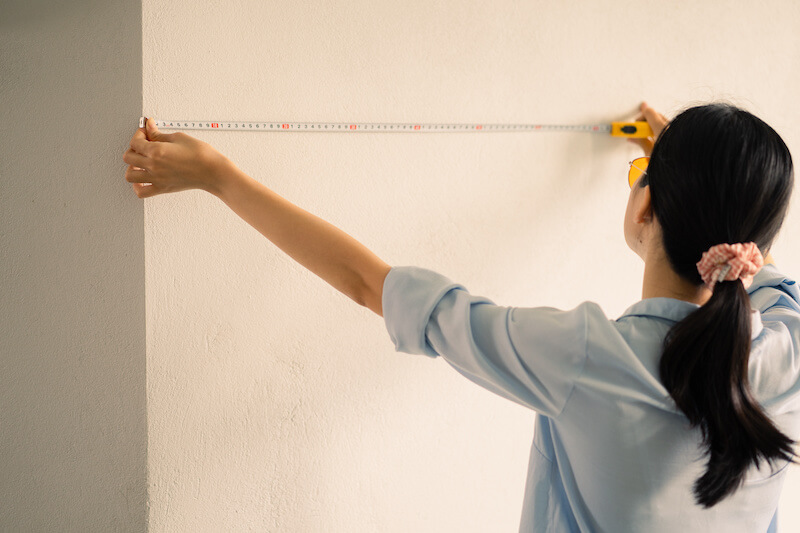
Before you get started, measure these areas in your living room.
Length, Width, and Height
Start by finding out the length, width, and height of your living room. You’ll need a tape measure, pencil, and maybe an extra set of hands to help keep the tape measure from bending.
Measure the length from one end of the room to the opposite wall, then the width from one side wall to the other. For the height, measure from the floor to the ceiling at several points to ensure accuracy, especially if the surfaces are uneven. Record all measurements, double-check them for precision, and include alcoves or nooks for a complete room profile.
Doors and Doorways
Measuring doorways is essential for ensuring your furniture can easily pass through without hassle during delivery and arrangement.
Start by measuring the width and height of each doorway, and don’t forget to note the door swing direction—it affects furniture placement and traffic flow.
Ideally, maintain at least 16 to 18 inches of space around doorways for comfortable movement. Try using painter’s tape to outline the dimensions on the floor, helping you visualize how the doorways interact with your planned furniture layout.
Windows
Measuring your window’s width and height will guarantee your window treatments fit perfectly. Properly sized treatments serve an invaluable purpose by controlling light, providing privacy, and helping with insulation. Ill-fitted curtains or blinds can look awkward and disrupt the harmony of your design, while well-measured ones create a polished, cohesive appearance.
For a polished look, measure from the top of the window frame to the floor, ensuring your curtains ideally touch the ground. Don’t forget to account for any architectural features, like molding or trim, so your treatments align seamlessly with the overall design, enhancing your living room’s charm.
Wall Space
When you’re ready to tackle wall space, start by measuring the height and width of each wall will help you choose wall art that fits well.
Remember to consider the distance between the floor and ceiling and the areas around doors and windows for a balanced look. Leave adequate negative space around larger pieces to prevent visual clutter and maintain an open, inviting living room.
Set a Budget

Setting a budget for decorating your living room involves thoughtful planning to ensure you create a stylish, functional space without overspending. Here’s how to approach it:
- Determine Your Total Budget: Start by deciding how much you’re willing and able to spend overall. Consider your financial situation and any other commitments to avoid stretching yourself too thin.
- Prioritize Your Needs: List the essential items your living room requires, such as seating, lighting, and storage, along with optional decor like artwork or rugs. Rank these based on necessity and impact.
- Research Costs: Look into the average prices for the items on your list. This step gives you a realistic sense of what to expect and helps you allocate funds wisely.
- Divide the Budget: Assign a portion of your budget to each category, keeping higher amounts for key investments like a quality sofa or durable flooring and smaller amounts for accessories.
- Plan for Unexpected Expenses: Set aside 10-15% of your budget as a contingency for any unforeseen costs or last-minute additions.
- Explore Cost-Saving Options: Consider alternatives like DIY projects, repurposed furniture, or shopping secondhand to stretch your budget further while maintaining style.
How Much Does It Cost to Decorate Your Living Room?
The cost of decorating a living room can vary widely depending on your style, preferences, and space size.
On average, a modest update with budget-friendly furniture and decor might cost $2,000 to $5,000, while a mid-range design with quality pieces could range from $5,000 to $10,000.
A high-end makeover with custom furniture, luxury materials, and professional design services can exceed $20,000. Factors like DIY projects, existing furniture, and smart shopping can help control costs.
Choose a Color Scheme
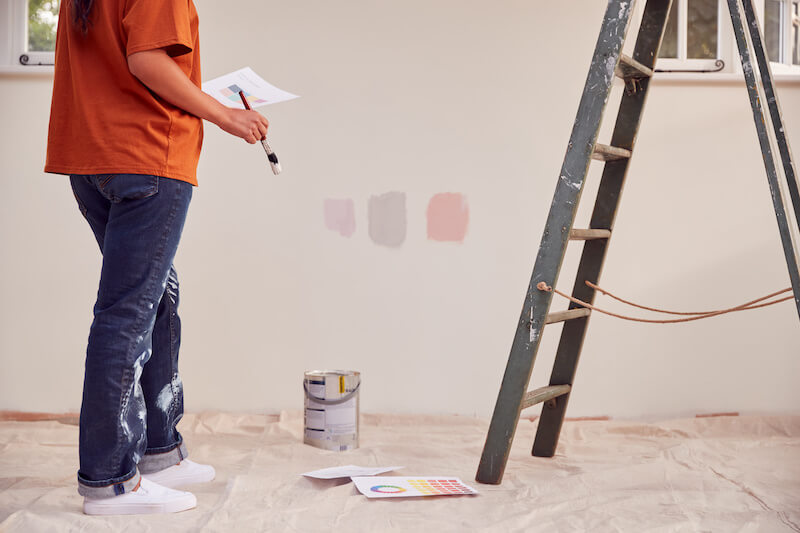
With your budget in place, you can focus on choosing a living room color scheme that will tie the space together.
You can use the 60/30/10 rule to guide your color choices. Here’s how it works: you’ll start with a dominant color for 60% of the space, a secondary color for 30%, and an accent color for the remaining 10%.
Starting with a grey living room or other light neutrals works well as a versatile base, especially when paired with a neutral rug, while bold colors can add a vibrant focal point. Consider the psychological effects of your choices; calming blues or energizing yellow color palettes could shape the room’s atmosphere.
To visualize your selections, use color swatches and mood boards, ensuring harmony between large pieces and accents, making your space feel inviting and uniquely yours.
Plan for Function & Form

To create a living room that meets your needs, start by defining its primary functions—whether you plan to entertain guests, unwind with family, or even work from home.
Once you have a clear purpose, measure your space accurately to guarantee your layout promotes flow and usability. Keep walkways around 16 to 18 inches between large furniture pieces like sofas and coffee tables, allowing for comfortable movement.
Consider incorporating multi-functional furniture, such as ottomans with storage, to maximize your space and versatility.
Invest in Key Furniture First
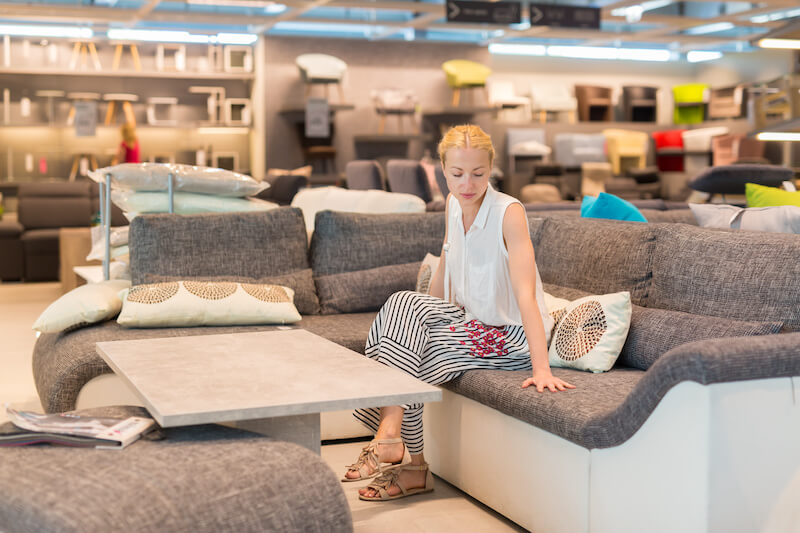
Invest in key furniture pieces when planning your living room, as they will establish the foundation for comfort and style.
Consider starting with a high-quality sofa, which will be the focal point and influence the entire space. Pair it with a coffee table that complements the sofa and fits the room’s scale, ensuring it’s accessible for drinks and snacks. Remember to add seating options, like accent chairs or ottomans, which provide versatility for entertaining guests.
Buy the Right-Sized Rug
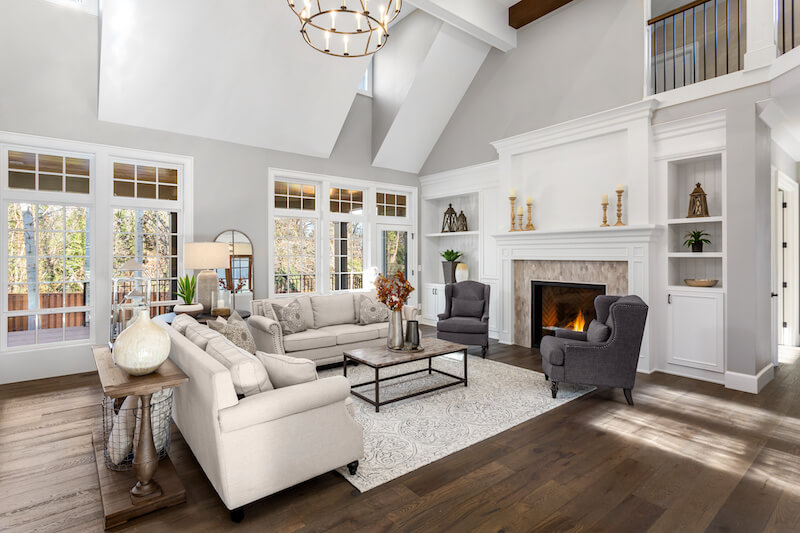
The size of your rug can define the space, anchor your furniture arrangement, and tie the room’s design elements together. A general rule of thumb is to choose a rug that’s large enough for the front legs of your seating to rest on it, creating a unified and inviting area. For smaller living rooms, a rug that fits under the coffee table and extends slightly beyond can still achieve a polished look without overcrowding.
Another factor to consider is the shape and style of your rug in relation to the room’s proportions and furniture placement. Rectangular rugs work well in most living rooms, as they complement the typical shape of the space and furniture arrangements. However, round rugs can add visual interest, particularly in cozy or uniquely shaped areas.
Always keep traffic flow in mind—ensure the rug doesn’t block doorways or pathways. Also, if your living room has an open floor plan, a properly sized rug can help define the seating area, making it distinct while maintaining harmony with the rest of the space.
Get the Lighting Right
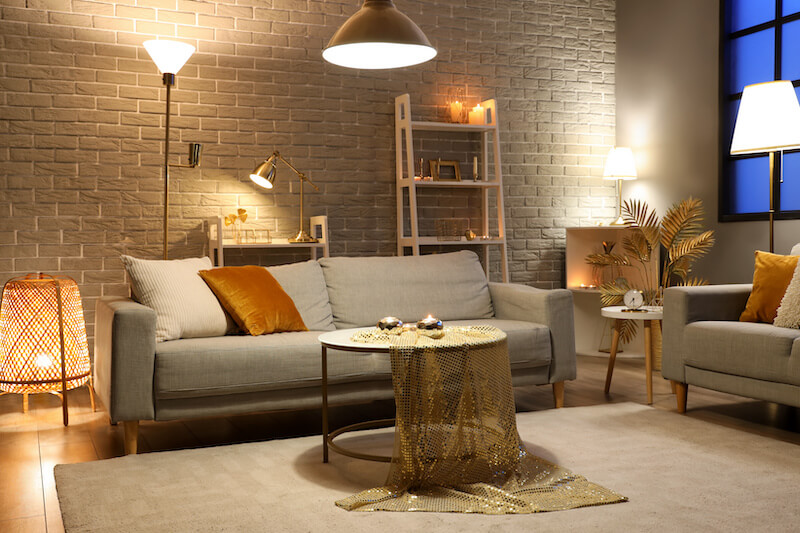
A well-lit living room needs layered lighting, which combines ambient, task, and accent lighting. Blending all three categories of lighting will help the room shine for any occasion.
Maximize natural light by using sheer window treatments that filter sunlight while keeping privacy intact. Don’t forget to install dimensional switches; they let you adjust brightness, creating a cozy atmosphere when needed.
Finishing Touches: Choose Living Room Wall Decor
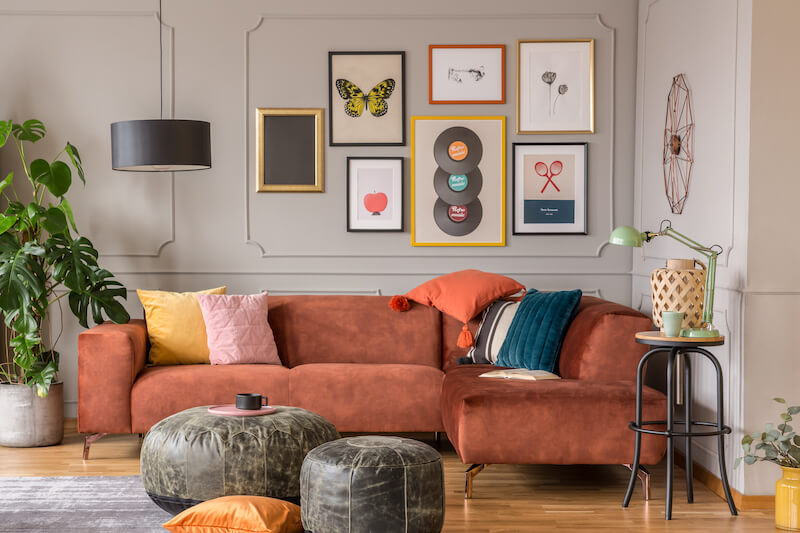
Choosing the right wall art can dramatically enhance your living room’s aesthetic. Opt for large pieces or create a gallery wall, as smaller artworks often get lost in larger spaces and won’t make the visual impact you want.
When selecting wall art, consider your room’s color scheme. Choose pieces that complement or provide a striking contrast to establish a cohesive look. Mirrors can also be stunning wall decor, reflecting light and making your space feel larger.
Consider incorporating personal photography or family portraits, which add a unique touch and showcase your cherished memories.
Remember to hang artwork at eye level—about 57 to 60 inches from the floor—to ensure everyone in the room can easily appreciate it.
Adapt As You Go
As you execute your design plans for your living room or family room, remain open to new opportunities and ideas that come up as you work. Unexpected challenges often arise during the process, so don’t be discouraged. What looks perfect in a design sketch or online might not work as well in your actual space due to factors like lighting, scale, or unforeseen constraints.
Flexibility allows you to make adjustments that align with your vision while accommodating these realities. It also gives you the chance to incorporate new ideas or inspirations you might discover along the way, ensuring your final design feels personalized and truly reflective of your style.
Regularly assess your decor, swapping out coffee table books or incorporating different seasonal elements that reflect your personality. Don’t hesitate to refresh your space by introducing multiple textures throughout, like woven throws or ceramic pieces, which can add depth and interest.
It Just Takes a Bit of Planning to Decorate Your Living Room
Decorating your living room is an exciting journey that can transform your space into a true reflection of your personality. Measure your area, set a budget, and carefully choose colors and furniture to create a harmonious environment that meets your needs. Remember to focus on lighting and wall art to add character. This is your space, so feel free to adapt as you go—after all, your living room should evolve just like you do!




